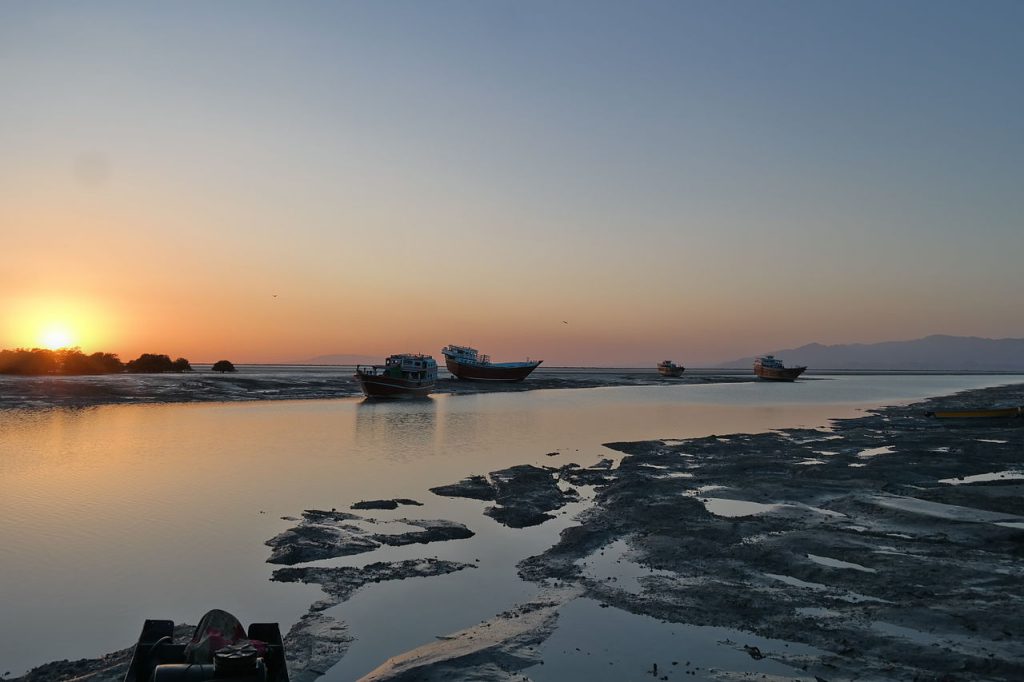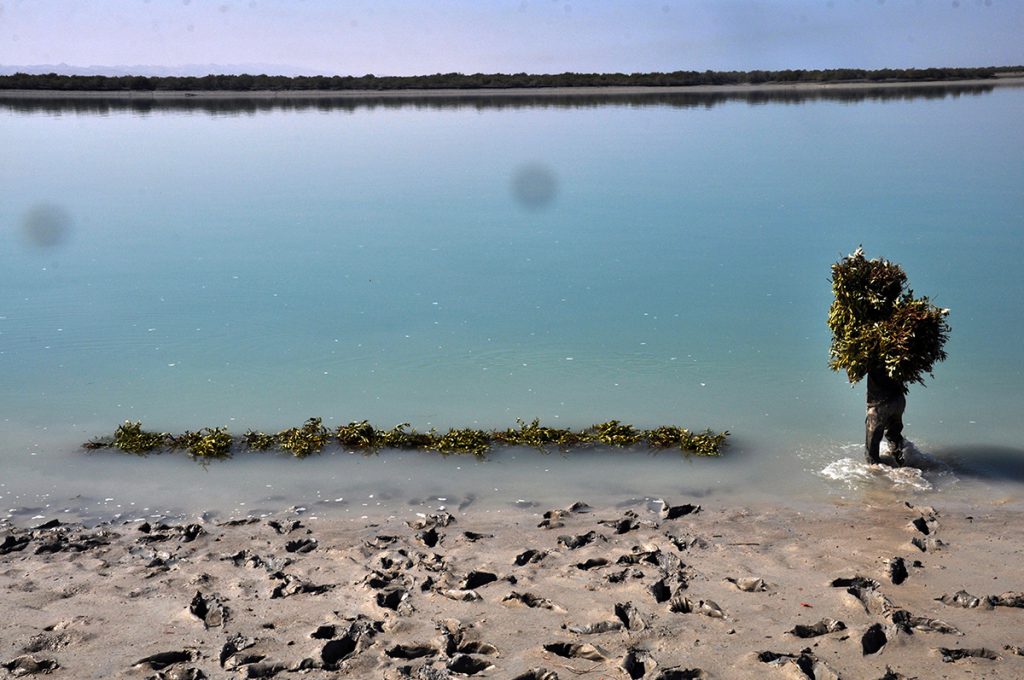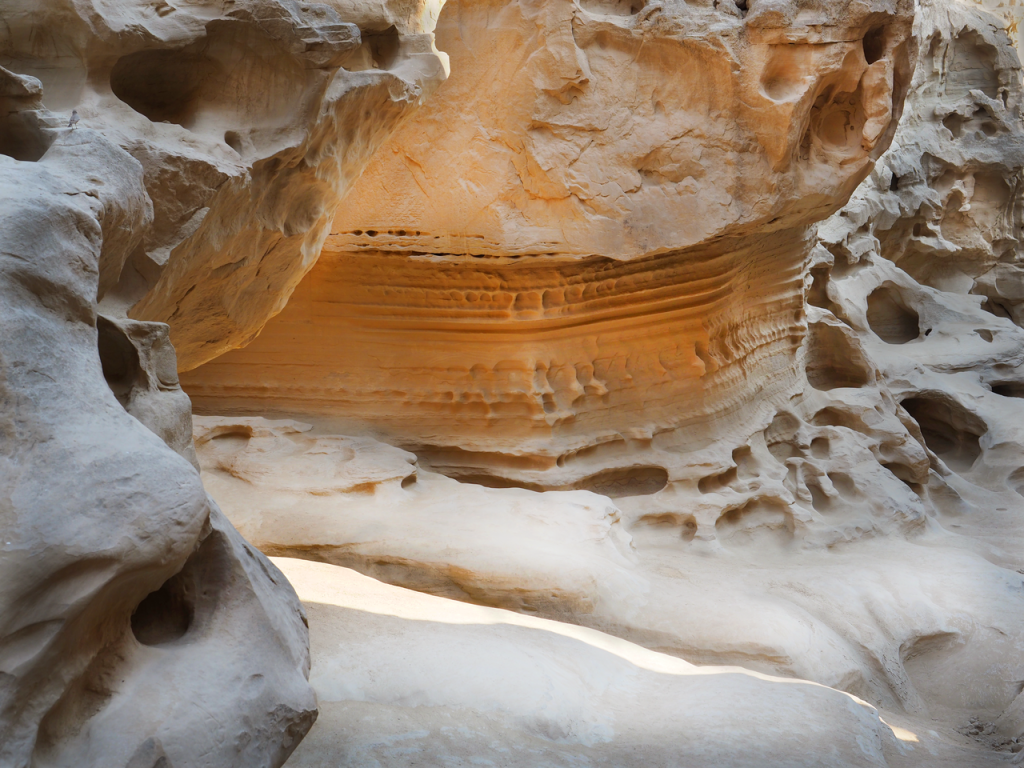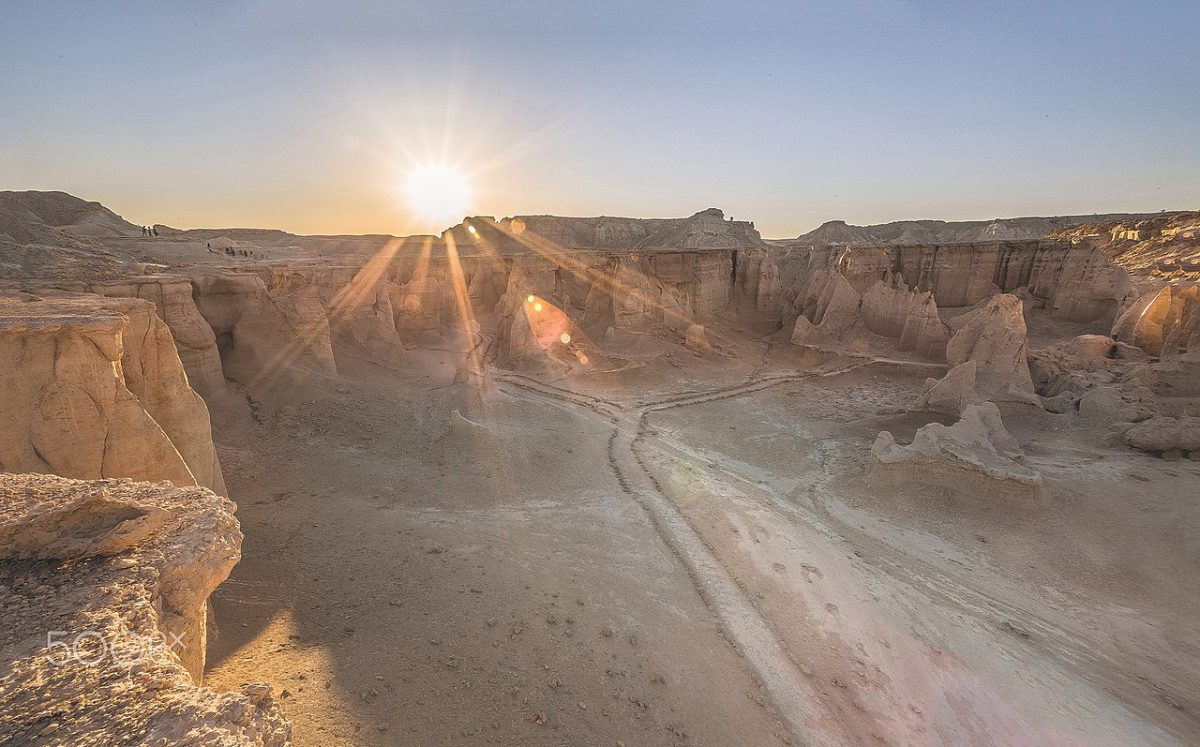Table of Contents
Qeshm Island is a paradise of natural beauty, recently earning the prestigious designation of a UNESCO Geopark. Visitors can immerse themselves in the lush greenery of the Hara Marine Forests, a unique ecosystem teeming with diverse wildlife. This verdant oasis offers a stark yet enchanting contrast to the serene expanses of Qeshm’s desert and the mystical landscapes of Star Valley. Exploring Qeshm Island Geopark provides an unparalleled opportunity to connect with nature’s wonders in one of the world’s most unique environments.
Adding to the island’s allure is the chance to experience the rich local culture and lifestyle. The blend of natural splendor and cultural heritage makes Qeshm Island a must-visit destination. Whether wandering through the dense mangroves or contemplating the quiet majesty of the desert, visitors will find themselves captivated by the island’s beauty and the warm hospitality of its inhabitants.
What is Geopark?

Geoparks are remarkable regions that seamlessly blend geological, natural, and cultural heritage, creating a truly captivating tapestry for visitors to explore. Belonging to the Geosciences Department of UNESCO, these unique designations are designed to foster local community involvement in the sustainable management and exploitation of the land, ensuring the preservation of invaluable geological, natural, and cultural treasures.
Unlike traditional protected areas, geoparks are not merely limited to restricting visitor access; rather, they are meticulously crafted to welcome and engage everyone who ventures within. This approach not only promotes the sustainable prosperity of local economies but also empowers communities to become active stewards of their remarkable landscapes. From improving geoscience education to encouraging widespread participation in safeguarding geological heritage, geoparks represent a pioneering model of coexistence between humans and the Earth, showcasing the boundless potential of harmonious collaboration.
Qeshm Geopark

Nestled within the Persian Gulf, the captivating island of Qeshm stands as a true gem, boasting a remarkable expanse of 1,500 square kilometers. This semi-tropical oasis is adorned with a tapestry of diverse flora, from the majestic kanar trees to the resilient mesquite and kerat vegetation, creating a breathtaking natural tableau.
What truly sets Qeshm apart is its strategic location, straddling the borders of two distinct marine ecosystems – the Persian Gulf and the Sea of Oman. This unique geographical positioning has birthed a remarkable biodiversity, where the contrasting habitats of the two waterways converge, giving rise to a veritable showcase of coastal wonders.
From the captivating rocky, coral, and sandy beds to the enchanting mangrove forests, Qeshm Island is a veritable playground for nature enthusiasts, boasting an unparalleled abundance of animal and plant life. The island’s tidal zones, sculpted by the currents of the Persian Gulf, further contribute to its allure, serving as a hub of biodiversity and a magnet for curious visitors.
Qeshm Geopark History
The establishment of Qeshm Island Unesco Global Geopark was driven by a profound commitment to protection, education, and sustainable development – the very pillars upon which UNESCO’s vision for geoparks is founded. Registered in 1385 AH, Qeshm Global Geopark stands as one of the pioneering members of the global network, a testament to its significance within the realm of earth sciences.
Initially, the geopark encompassed an area of 300 square kilometers in the western reaches of Qeshm Island. However, its boundaries expanded in 2016 to include the entirety of the island, its verdant mangrove forests to the north, and the captivating Hemaga island. This expansion cemented Qeshm Island Geopark’s status as one of the oldest and largest geoparks in the West Asian and Middle Eastern regions, spanning an impressive 2,063 square kilometers. Regrettably, in 1391 AH, the management of the Qeshm Free Zone failed to adhere to the global registration criteria, leading to the geopark’s removal from UNESCO’s prestigious list.
Through the tireless efforts of the authorities, Qeshm Island Geopark was eventually reinstated as a global geopark in 2016, securing a coveted four-year term. Yet, the challenges persisted, as the transfer of the Qeshm salt cave area for residential, aquaculture and industrial development once again threatened the geopark’s status in 2018. As international organizations continue to recognize and support the significance of geoparks, it is essential that the host country, in this case Iran, redouble its efforts to safeguard and maintain the invaluable Qeshm Island Geopark for generations to come.
Qeshm Island Geopark Sites

The Qeshm Island Geopark is a veritable treasure trove of geological, natural, and cultural marvels, meticulously curated and protected within its distinctive sites. From the awe-inspiring splendor of Star Valley to the otherworldly formations of Korkora Kooh, the geopark invites visitors on a spellbinding journey of discovery. Here are the top 5 geosites:
Chahkooh Canyon
Located just 70 kilometers from the city of Qeshm, the captivating Chahkooh Canyon is one of the seven natural marvels of Qeshm Island. This geological wonder has been drawing in adventurous tourists eager to explore the hidden gems of the island.
Descending into the depths of the canyon, visitors are met with a stunning display of erosion, where the forces of nature have carved into the sedimentary rock layers over time. This 100-meter-deep canyon serves as a testament to the power of erosion, providing a glimpse into the island’s dynamic geological history. As part of Qeshm Island’s UNESCO-approved geopark, Chahkooh Canyon offers a unique opportunity to immerse oneself in the island’s rich geological heritage.
Korkora Kooh
Situated within the central district of Qeshm Island, the Korkora Kooh geosite stands as a testament to the dynamic forces that have sculpted the earth’s surface over time. Located in the eastern part of Giahdan village, approximately 25 km from Qeshm city, this captivating location reveals the intricate story of its geological past.
The Korkora Kooh geosite owes its striking appearance to the eruption of marl deposits within the Aghajari Formation, which has been exposed due to the core of the Holor anticline. The dominant feature of this landscape is the remarkable Badland formation, where the relentless forces of water have carved intricate patterns into the hillsides.
Rill Erosion and Gully Erosion have created a mesmerizing tapestry of small valleys and drainage channels, each one a unique work of natural art. As the rainwater flows down the slopes, it has carved through the clay-rich soil, leaving behind a captivating labyrinth of grooves and waterways. The erosion process has also played a pivotal role in shaping the underground corridors, adding to the site’s geological and geomorphological wonders.
Stars Valley
The Stars Valley, located on Qeshm Island in Iran, is a remarkable geological formation showcasing the power of erosion. This tapestry of interconnected branches is the result of millions of years of natural processes. The valley’s unique appearance is shaped by the interplay of different rock layers. A thick, soft bottom layer is rapidly eroded, while a thin, hard top layer acts as a protective shield. Wherever this top layer is breached, erosion accelerates, creating the valley’s intricate branching patterns.
The valley’s floor and layers are incredibly delicate, and even light footsteps can compromise their integrity. To preserve this geological heritage, it is crucial to strictly limit human activity in the area. The Stars Valley’s history dates back to the Middle to Late Miocene period, approximately 5 to 10 million years ago. Local folklore once attributed the valley’s distinctive features to a falling star, hence the name “Estareh Kafteh.”
This captivating geological marvel is a testament to the power of natural forces and a treasure trove of scientific and aesthetic wonder. Its preservation is of utmost importance, not only for its geological significance but also for its cultural and historical value.
Bam-Qeshm
Bam Qeshm, a captivating part of the UNESCO-recognized Qeshm Geopark, stands as a testament to the harmonious coexistence between nature and human activity. This unique zone not only showcases Qeshm’s breathtaking sights but also serves as a hub for tourism and education in the region. From its elevated vantage point, visitors are treated to sweeping views of the Persian Gulf’s northern coastlines, the awe-inspiring Valley of Sculptures, and the lush mangrove forests. As night falls, the area transforms into a celestial theater, with a canopy of stars stretching across the sky.
The geological significance of Bam Qeshm extends far beyond its scenic beauty. The rocks and mountains in this area are ancient marvels, dating back over two million years, formed gradually as the sea receded. Fascinatingly, the region boasts a rich archaeological history, with evidence of human presence dating back to the Iron Age.
Neanderthals once roamed these lands, leaving behind traces of their existence in the Qeshm Geopark area. Even after the extinction of Neanderthals, the area continued to be inhabited, as evidenced by pre-Islamic pottery discovered by archaeologists, pointing to the presence of intelligent human settlements on the roof of Qeshm and its surroundings across various historical periods.
Mangrove Forests
Along the southern coast of Iran, a unique natural wonder awaits visitors – the Hara forests, also known as the Mangrove forests of Qeshm. These remarkable ecosystems bear little resemblance to conventional forests, offering a mesmerizing spectacle where trees appear to float on water. Spanning an impressive 200 km area, Qeshm Island boasts the largest and most accessible of these forests, drawing nature enthusiasts from far and wide.
What sets these forests apart is their incredible resilience and adaptation to their marine environment. With a history stretching back 30 to 40 million years, these trees have evolved to thrive in brackish waters. As the tides ebb and flow, the trees emerge from and submerge into the sea, creating a constantly changing landscape. Perhaps most remarkably, these mangroves act as natural desalination plants, filtering out salt to survive on freshwater in their saline surroundings. This unique ability, coupled with their evergreen nature, paints a stunning picture of vibrant green foliage seemingly floating atop the azure waters of the Persian Gulf.
Qeshm Island Geopark Museum
On the breathtaking Qeshm Island, the Geopark Museum stands as a testament to the region’s incredible biodiversity and geological marvels. This fascinating institution, which welcomed its first visitors in 1384 AH, sprawls across an impressive 1000 square meters, offering an unparalleled journey through the animal kingdom. From the minuscule pygmy insectivore, weighing a mere two grams, to the awe-inspiring 15-meter-long humpback whale skeleton, the museum’s expertly preserved specimens showcase nature’s astonishing diversity in vivid detail.
Bird enthusiasts will find themselves in paradise as they meander through the museum’s extensive avian collection. The exhibits span from the delicate nectarine, one of the world’s tiniest feathered creatures, to the majestic gray-footed pelican, a species teetering on the brink of extinction. But the wonders don’t stop there – the museum’s paleontology section boasts a treasure trove of stones and shells, while meticulously crafted miniature replicas of Qeshm’s geological highlights, including the world’s longest salt cave and the nesting grounds of eagle-nosed turtles, bring the island’s natural beauty to life in exquisite detail.
Best Time to Visit Qeshm Island Geopark
The ideal time to visit Qeshm Island Geopark is during the months of January through April, as well as November and December. During this period, the island experiences pleasant temperatures, making it an excellent time for exploration and outdoor activities. The weather during these months is mild and comfortable, creating the perfect conditions to fully appreciate the natural wonders of the geopark.
FAQs about Qeshm Island Geopark
Q1: What is Qeshm Island Geopark?
A1: Qeshm Island UNESCO Global Geopark is a prestigious designation that recognizes its unique blend of geological, natural, and cultural heritage.
Q2: What can visitors experience in Qeshm Island Geopark?
A2: Visitors can immerse themselves in the lush Hara Marine Forests, explore the serene desert landscapes, and marvel at the mystical Star Valley. They can also experience the rich local culture and hospitality of the island’s inhabitants.
Q3: What is a Geopark?
A3: Geoparks are remarkable regions that seamlessly combine geological, natural, and cultural heritage, promoting sustainable management and community involvement. Geoparks are not just about restricting access, but about engaging visitors and empowering local communities to be stewards of the land.
Q4: What makes Qeshm Island Geopark unique?
A4: Qeshm Island is strategically located between the Persian Gulf and the Sea of Oman, giving rise to a remarkable biodiversity and diverse coastal habitats. The geopark encompasses a vast area of 2,063 square kilometers, making it one of the oldest and largest geoparks in the West Asian and Middle Eastern regions.
Q5: What are some of the top geosites in Qeshm Island Geopark?
A5: The geopark features distinctive geosites, including the awe-inspiring Star Valley and the otherworldly formations of Korkora Kooh.
Last Words: Explore the Best of Qeshm Island Geopark with a Customized Tour
Qeshm Island is a natural paradise, recently earning the prestigious designation of a UNESCO Geopark. Visitors can explore the lush Hara Marine Forests, a unique ecosystem teeming with diverse wildlife, offering a stark yet enchanting contrast to the serene desert landscapes and mystical Star Valley.
If you’re eager to explore the captivating Qeshm Island Geopark and immerse yourself in the best of what Iran has to offer, embarking on a Customized tour is the way to go. This is where To Iran Tour steps in as your trusted partner. As seasoned experts in crafting exceptional Iran tours and travel packages, the team at To Iran Tour is dedicated to designing Iran Tours that cater to your unique needs.
By entrusting your Qeshm Island Geopark exploration to the professionals at To Iran Tour, you can rest assured that your journey will be a seamless and enriching experience.

